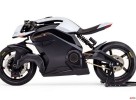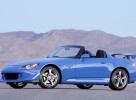Researchers at NASA have figured out a way to successfully reproduce the processes that take place in the atmosphere of a red giant star and lead to the formation of planet-forming interstellar dust.
By using a specialized Cosmic Simulation Chamber (COSmIC) facility, which was designed and manufactured NASA's Ames Research Center in Moffett Field, California, scientists are able to recreate and examine dust grains similar to the grains that form in the outer layer of dying stars, according to DiscoveryNews.com.
Dust grains that are created around dying stars and ejected into the interstellar medium lead, after a life cycle spanning millions of years, to the formation of planets, are the key ingredient of the universe's evolution.
Researchers have learned that the materials that make up the building blocks of the universe are more difficult than previously believed, according to DiscoveryNews.com.
"The harsh conditions of space are extremely difficult to reproduce in the laboratory, and have long hindered efforts to interpret and analyze observations from space," said project leader Farid Salama in a statement, according to the Daily Mail.
Salma added that by using the COSmiC simulation they can now find clues to questions about the composition and evolution of the universe.
The researchers started with small hydrocarbon molecules that it enlarged in the cold jet spray in COSmiC and exposed to high energy in an electric discharge, according to DiscoveryNews.com.
They were able to find and characterize large molecules that are formed in the gas phase from these precursor molecules with sensitive detectors. Then they collected separate solid grains formed from these molecules and imaged them by using Ames' Scanning Electron Microscope (SEM).
"During Cosmic experiments, we are able to form and detect nanoparticles on the order of 10 nm size, grains ranging from 100-500 nanometers and aggregates of grains up to 1.5 micrometers in diameter, about a tenth the width of a human hair," said Ella Sciamma-O'Brien, of the BAER Institute and a research fellow at NASA, according to the Daily Mail.
See Now: OnePlus 6: How Different Will It Be From OnePlus 5?






















